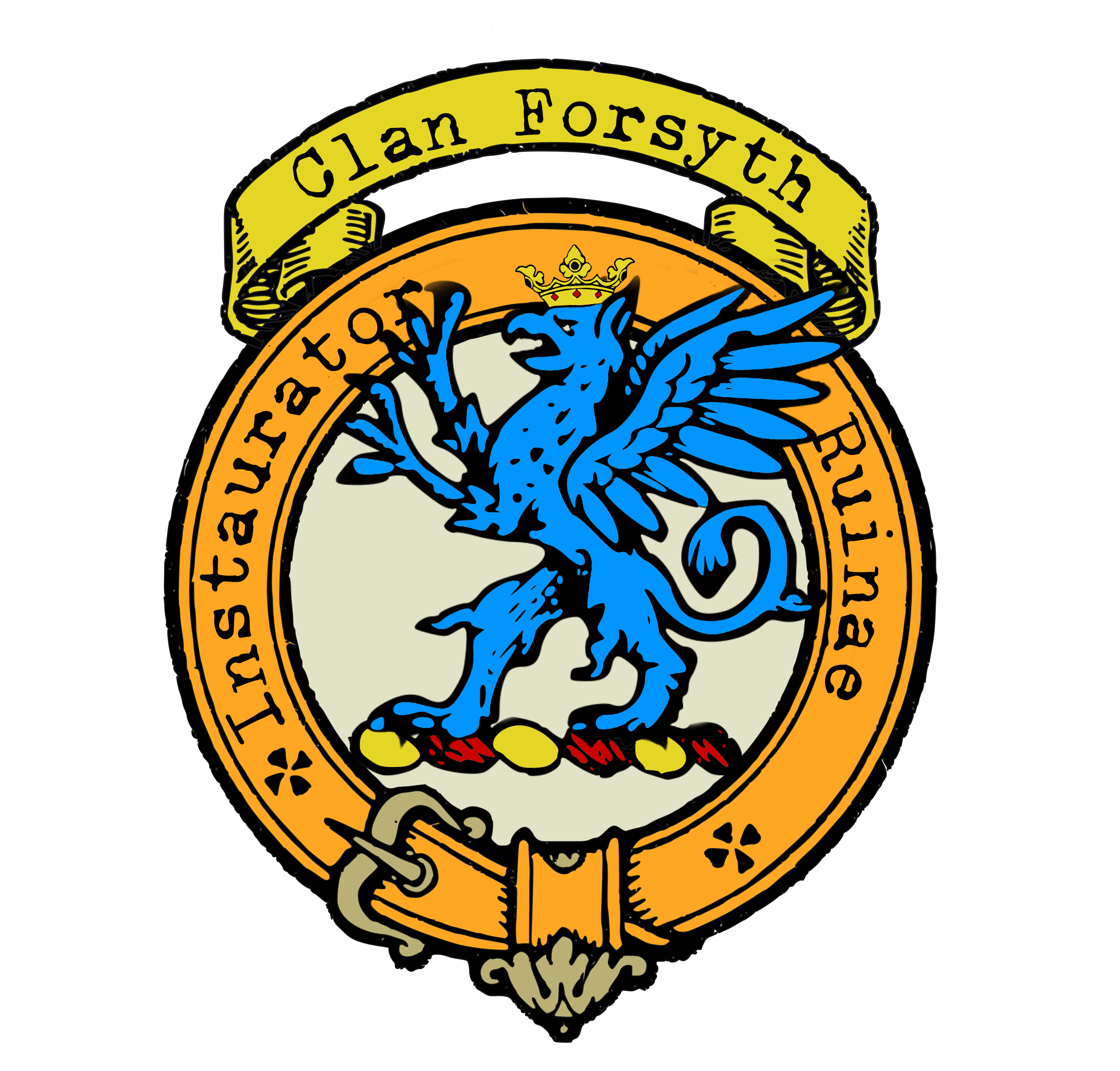Forsyth Clan Crest
|
|
CREST: A griffin sergeant Azure, armed and membered Sable, crowned Or MOTTO: Instaurator Ruinae TRANSLATION: A repairer of ruin VARIATIONS: N/A |
| The Scottish Clan Forsyth has a long and storied history dating back to at least the 13th century. Over the years, members of the clan have held positions of power and influence, fought in battles, made significant contributions to the fields of horticulture and firearms, and associated closely with some of Scotland’s most powerful families. | |
 |
|
| Purchase @ Redbubble Purchase @ Amazon.com Purchase @ Amazon.co.uk |
|
| The Forsyth family’s origins can be traced back to William de Fersith, who appeared on the Ragman Roll of Scottish noblemen submitting to Edward I of England in 1296. From there, the family continued to grow and distinguish themselves over the centuries.
One notable member of the clan was Osbert, son of Robert de Forsyth, who received a grant of lands at Sauchie in Stirlingshire from Robert the Bruce sometime after March 1306. Osbert distinguished himself at the Battle of Bannockburn and received confirmation under the great seal of the realm of his lands in 1320. His son was appointed the king’s macer and constable of Stirling Castle in 1368, while Fersith the clerk is recorded receiving a royal pension of one hundred pounds per annum from Robert II. Another branch of the family, the Forsyths of Nydie, tied their fortunes to their powerful relatives, the Archbishops of St Andrews, and acquired lands around the royal Palace of Falkland. They were also associated with the Earl of Rothes, as James Forsyth married his granddaughter, Elizabeth Leslie. The Forsyth family has also made significant contributions to fields such as horticulture and firearms. William Forsyth, born at Old Meldrum in 1737, was a distinguished horticulturist who was appointed Chief Superintendent of the Royal Gardens at Kensington and St James Palace in 1784. He made significant discoveries about plant diseases and wrote a popular treatise on the subject. The Reverend Alexander John Forsyth was a pioneer in the development of modern firearms, and his work led to the invention of the percussion lock, which replaced the flintlock in the eighteenth century. He received a modest Crown pension for his invention, which in today’s terms would have brought him enormous wealth. Today, the Forsyth family is represented by the current chief, who was recognized by the Lord Lyon in 1970. The family motto, “Instaurator ruinae,” or “Restorer of ruin,” is highly appropriate given the family’s history of restoration and rebuilding. The family seat is now Ethie Castle near Arbroath, which has been restored by the current chief. The Scottish Clan Forsyth has a rich and diverse history, with members of the family distinguishing themselves in fields such as horticulture and firearms and associating closely with some of Scotland’s most powerful families. Today, the clan continues to thrive under the leadership of the current chief, who has restored the family seat and continues the family’s tradition of restoration and rebuilding. |
|
Citations:
|
|

